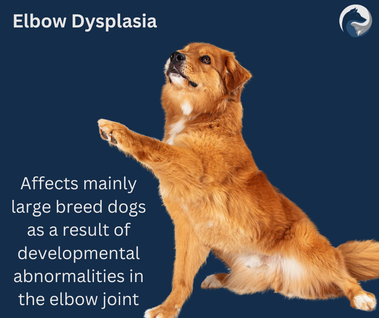|
Elbow dysplasia is a common orthopaedic condition that affects dogs, particularly large and giant breeds. It refers to a group of developmental abnormalities that occur in the elbow joint, leading to pain, lameness, and reduced mobility. In this blog post, we will explore the different types of canine elbow dysplasia, their symptoms, and the available treatment options.
Canine elbow dysplasia encompasses various conditions that can affect a dog's elbow joint, causing pain and reduced mobility. Early detection, accurate diagnosis, and appropriate treatment are crucial for improving the quality of life for affected dogs. With the right approach, many dogs can lead happy, active lives. |
AuthorJoanna Whitehead Archives
June 2024
Categories
All
|

 RSS Feed
RSS Feed 
